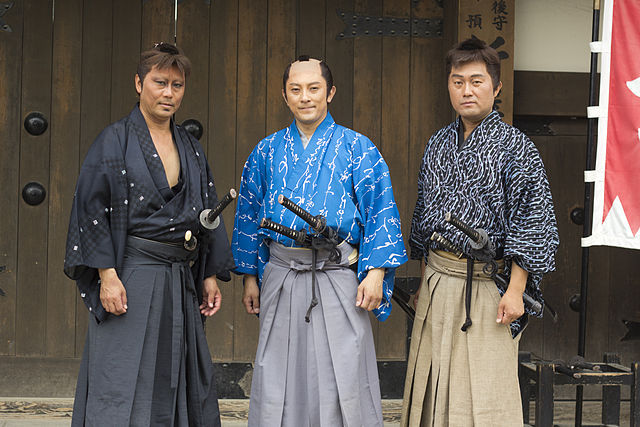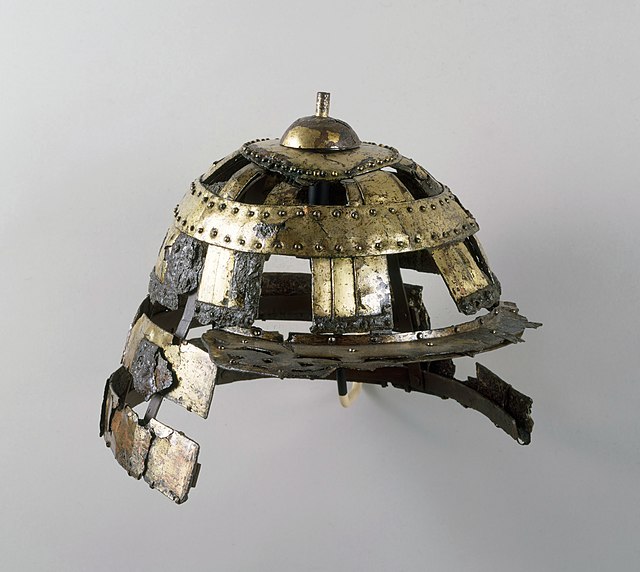In feudal Japan (1185–1868), a rōnin was a samurai who had no lord or master and in some cases, had also severed all links with his family or clan. A samurai becomes a rōnin upon the death of his master, or after the loss of his master's favor or legal privilege.
A woodblock print by ukiyo-e master Utagawa Kuniyoshi depicting famous rōnin Miyamoto Musashi having his fortune told
Ukiyo-e woodblock print by Yoshitoshi depicting Oishi Chikara, one of the forty-seven rōnin
Graves of the forty-seven rōnin at Sengaku-ji
Actors portraying ronin on left and right, employed samurai in the middle. His chonmage makes him identifiable as an employed samurai.
Samurai were the hereditary military nobility and officer caste of medieval and early-modern Japan from the late 12th century until their abolition in the late 1870s during the Meiji era. They were the well-paid retainers of the daimyo, the great feudal landholders. They had high prestige and special privileges.
A samurai in his armour in the 1860s. Hand-colored photograph by Felice Beato
A Kofun period helmet, gilt copper, 5th century, Ise Province
In the noh drama Sanjō Kokaji, the 10th-century blacksmith Munechika, aided by a kitsune (fox spirit), forges the tachi (samurai sword) Ko-Gitsune Maru.
Taira no Masakado attacking an opponent on horseback (Yoshitoshi)








